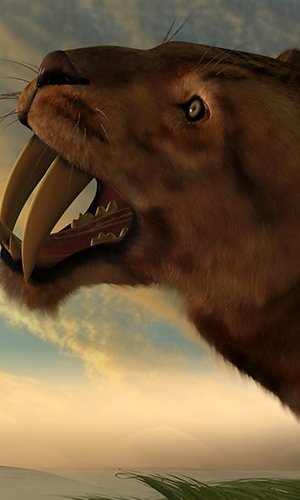Biotech company Colossal Biosciences recently announced it had “brought back to life” dire wolves (Aenocyon dirus), fearsome Ice Age predators made famous by the TV series Game of Thrones. The announcement, made on Monday 7 April 2025, unveiled images of three fluffy white pups, hailed as the result of the “world’s first de-extinction”. Colossal’s CEO, Ben Lamm, claimed the company had “produced healthy dire wolf puppies”, resurrecting these predators more than 10,000 years after they vanished. However, numerous experts have expressed strong disagreement, calling the language used by Colossal misleading. Nic Rawlence, associate professor and co-director of the Otago Palaeogenetics Laboratory at the University of Otago, told the New Zealand Science Media Centre (NZ SMC): “What Colossal has made is a grey wolf with traits similar to the dire wolf.” He added that this is not a true de-extinct dire wolf, but rather a “hybrid”. To create the pups, scientists extracted DNA from two ancient dire wolf fossils: a 13,000-year-old tooth from Sheridan Pit, Ohio, and a 72,000-year-old inner ear bone from American Falls, Idaho. Using this DNA, researchers reconstructed a partial dire wolf genome and compared it with those of modern relatives like wolves, jackals, and foxes. Based on their findings, they chose the grey wolf (Canis lupus) as the egg donor species for “reviving” the dire wolf; even though, as experts highlight, the two aren’t particularly closely related. David Mech, professor of wolf ecology and behaviour at the University of Minnesota and researcher at the U.S. Geological Survey, stated: “New evidence shows the original Aenocyon wasn’t really a wolf.” From an evolutionary perspective, dire wolves diverged from modern wolves around six million years ago, forming a completely separate lineage. Philip Seddon, zoology professor at the University of Otago, remarked: “Dire wolves belong to their own genus, so they’re a very different species.” He added that “the African jackal might actually be more closely related to dire wolves”. Colossal’s first two “dire wolves”, named Romulus and Remus, were born in October 2024. A third pup, Khaleesi, was born on 30 January 2025. To produce them, Colossal scientists collected cells from grey wolf blood samples and modified them to resemble those found in dire wolf fossils. Using CRISPR gene editing technology, the team introduced a total of 20 edits across 14 genes identified as crucial to dire wolves’ distinctive features. Then, using a cloning process similar to the one used for Dolly the sheep in 1996, scientists inserted the modified DNA into grey wolf eggs whose original genetic material had been previously removed. At this point, the eggs contained all the genetic information needed to create wolves with some of the traits typical of dire wolves. The embryos were grown in the lab and later implanted into the wombs of domestic dogs, technically a subspecies of the grey wolf. The Colossal pups are currently housed in a natural reserve enclosed by a 3-metre-high fence and under constant monitoring. Bridgett vonHoldt, professor of evolutionary genomics and epigenetics at Princeton University and a collaborator on the project, stated: “They will live their lives in a luxurious sanctuary under human care.” She also noted that, as observed with previous cloned animals, their health remains unpredictable and potentially concerning. It’s unclear how dangerous these animals are, but their behaviour is unlikely to differ significantly from that of captive grey wolves, especially since they’ve been surrounded by humans since birth. Romulus, Remus, and Khaleesi won’t be released into the wild, but Colossal has said it may consider introducing animals in “safe ecological reserves” in the future. Nonetheless, some experts strongly doubt such reintroductions would be successful. There are serious questions around how these animals would fit into modern ecosystems, since dire wolves occupied a completely different ecological niche that no longer exists today. Many experts have criticised Colossal’s announcement, though some have praised the company’s technological advances. According to some, the work represents progress in genetic technology that could benefit conservation efforts for existing species. One such species is the red wolf (Canis rufus), the world’s most endangered wolf. Colossal has announced the birth of two litters of cloned red wolves, boosting the number of red wolves in captivity in the US and offering fresh hope for the species. Despite these strides, experts insist Colossal’s claim to have resurrected the dire wolf is unsubstantiated. “Colossal compared the genomes of the dire wolf and grey wolf, and from about 19,000 genes, they identified 20 changes in 14 genes as making a dire wolf.” Moreover, Colossal’s “dire wolves” are not technically the first de-extinction ever. Back in 2003, scientists in Spain cloned an extinct wild goat species called the Pyrenean ibex (Capra pyrenaica pyrenaica). One baby ibex was born but died seven minutes later due to a lung defect. In the end, while acknowledging the technological breakthroughs achieved, the scientific community agrees that the pups created by Colossal Biosciences represent the genetic engineering of grey wolves with some dire wolf-like features, not a true de-extinction of Aenocyon dirus.




